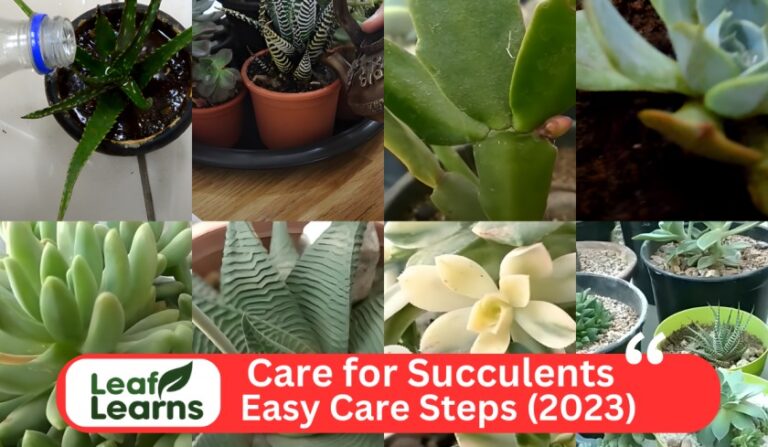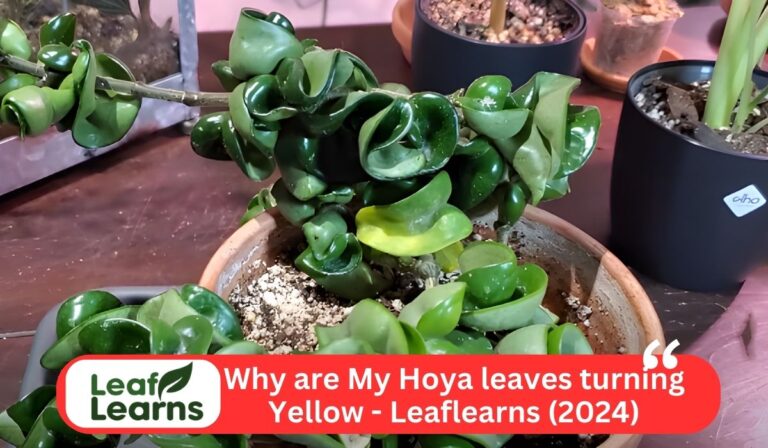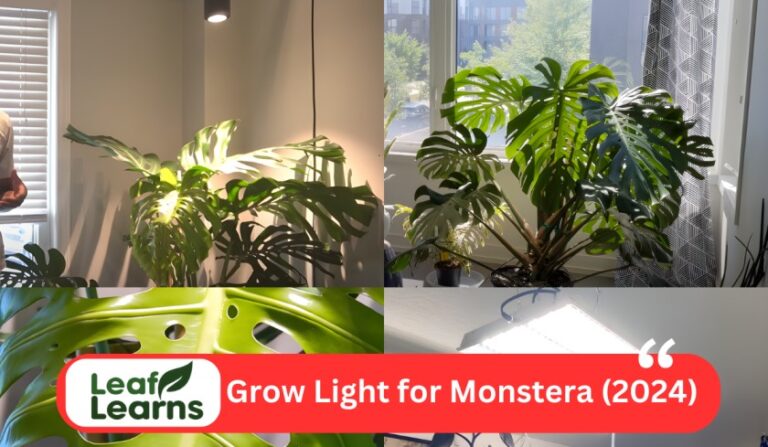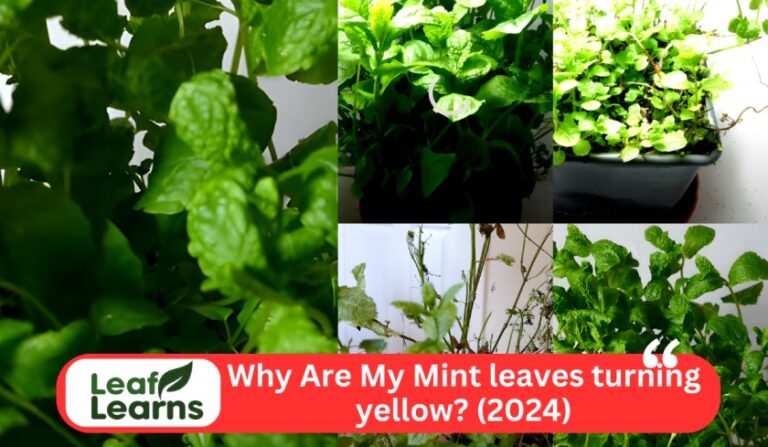Why Are My Rubber Plant Leaves Drooping – Leaflearns (2024)
Rubber plant leaves drooping (ficus elastica) can be caused by various factors, including poor lighting, sudden temperature changes, pests, diseases, water stress, improper soil, over-fertilization, or neglect leading to root-bound issues. In order to remedy this, evaluate the plant’s environment and maintenance schedule, modify the frequency of watering, make sure the drainage is appropriate, supply sufficient light, and keep an eye out for pests. By taking these actions, you may encourage general plant health and revitalize drooping leaves.
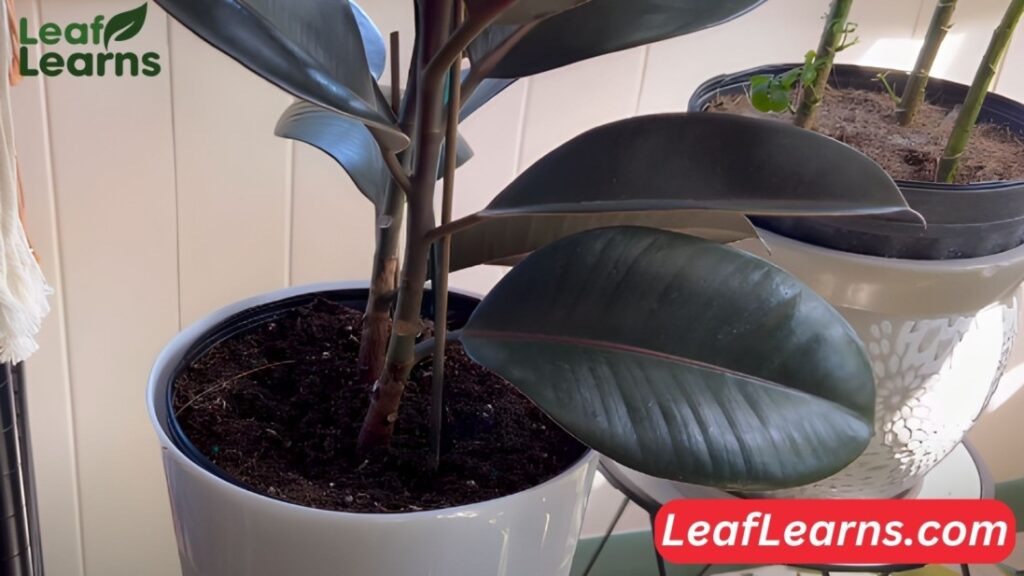
Contents
- 1 Causes of Rubber Plant Leaves Drooping
- 1.1 Overwatering
- 1.2 Underwatering
- 1.3 Extremely Hot Temperatures
- 1.4 Low Humidity
- 1.5 Too Little Light
- 1.6 Overfeeding
- 1.7 Accumulation of Salts in the Soil
- 1.8 Underfeeding
- 1.9 Root-rot Disease
- 1.10 Pest Infestations
- 1.11 Root-Bound Plant
- 1.12 Poor Quality Soil
- 1.13 Root Bound and Transplant Problems
- 1.14 Rubber plants and humidity
- 2 Caring for Your Rubber Plant
- 3 Final Thoughts
- 4 FAQs
Causes of Rubber Plant Leaves Drooping
Overwatering
The most frequent reason for rubber plant leaves drooping is overwatering. Consistently wet soil causes root rot, which makes it more difficult for plants to properly absorb nutrients and water. Due to its inability to sustain itself, the plant wilts, and its leaves droop.
Solution: Adjusting Watering Practices
Modify your watering techniques to address overwatering. To avoid soggy conditions, let the top few inches of soil dry out in between waterings.
Use a pot with drainage holes and a soil mixture that drains effectively to provide enough drainage in the container. If there is insufficient drainage in the plant’s existing pot, think about repotting it.
Underwatering
One typical cause of rubber plant leaves drooping is underwatering. Dehydration brought on by a lack of water can make leaves droop and wilt. Rubber plants want their soil to be regularly damp, but not soggy.
Solution: Adjusting Watering Routine
You may fix this problem by modifying your watering schedule so that the soil stays consistently wet. Regularly check the moisture content of the soil by sticking your finger about an inch deep into it; if it seems dry, water.
Increase Humidity
Preventing dehydration can also be aided by raising the humidity surrounding the plant. To keep the leaves at the right moisture content, mist them frequently or put a humidifier close by.
Proper Drainage
To avoid waterlogging, transplant the plant into a container with drainage holes and a well-draining potting mix to guarantee enough drainage.
Extremely Hot Temperatures
Overheating can result in high transpiration, which causes the rubber plant to lose water faster than it can take in. As a result, the plant may struggle to stay hydrated, which may cause its leaves to wilt and droop.
Solution
It is essential to provide the rubber plant with enough shade from direct sunshine during the hottest parts of the day to solve this problem.
To avoid overheating, make sure the plant is situated in an area with enough ventilation. Another way to help reduce the impacts of dry heat and raise humidity levels is to spray the leaves regularly.
Low Humidity
Rubber plant leaves may lose moisture if there is little humidity present, particularly in colder months or in rooms with central heating.
This might cause the rubber plant leaves drooping and lose their turgidity, which would be detrimental to the overall look and health of the plant.
Solution
To combat the issue of low humidity and revive your drooping rubber plant:
Boost Humidity: To create a more humid atmosphere, use a humidifier next to the plant or surround it with other plants.
Misting: To increase the humidity levels surrounding the plant, sprinkle its leaves often with water.
Peppering: Place the plant on a tray with water and stones in it to make the surrounding air more humid.
Hydration: Make sure you water your rubber plant enough, but don’t water it too much because damp soil will make drooping leaves worse.
Too Little Light
Rubber plant leaves drooping due to a lack of light. These plants need strong, indirect sunshine to develop well; little light causes them to struggle with photosynthetic processes, which weakens their growth and causes their leaves to droop.
Solution: Providing Adequate Lighting
Make sure your rubber plant gets enough light to solve this problem. Position it next to a strong, indirect light source, like a window that faces east or north.
If there is not enough natural light, use artificial grow lights made for houseplants. To make sure the plant receives the same amount of light on all sides, rotate it occasionally.
Overfeeding
If you overfertilize your rubber plant, it may result in nutritional imbalances and rubber plant leaves drooping.
Overfertilizer application can cause salt to accumulate in the soil, which will impede the plant’s capacity to efficiently absorb nutrients and water. Drooping leaves are the outcome of this imbalance interfering with the plant’s internal functions.
Solution: Adjusting Fertilization
The first step in fixing overfed rubber plant leaves that droop is to properly water the soil to remove excess salts.
Next, change the timing of your fertilization and use a balanced, diluted fertilizer that is made especially for rubber plants. Pay close attention to the suggested dosage and refrain from applying too much.
Accumulation of Salts in the Soil
Soil salinity can result from the gradual accumulation of salts from mineral-rich soil, tap water, and fertilizers. The plant may have an osmotic imbalance as a result of the excess salt, which might lead to water loss and rubber plant leaves drooping.
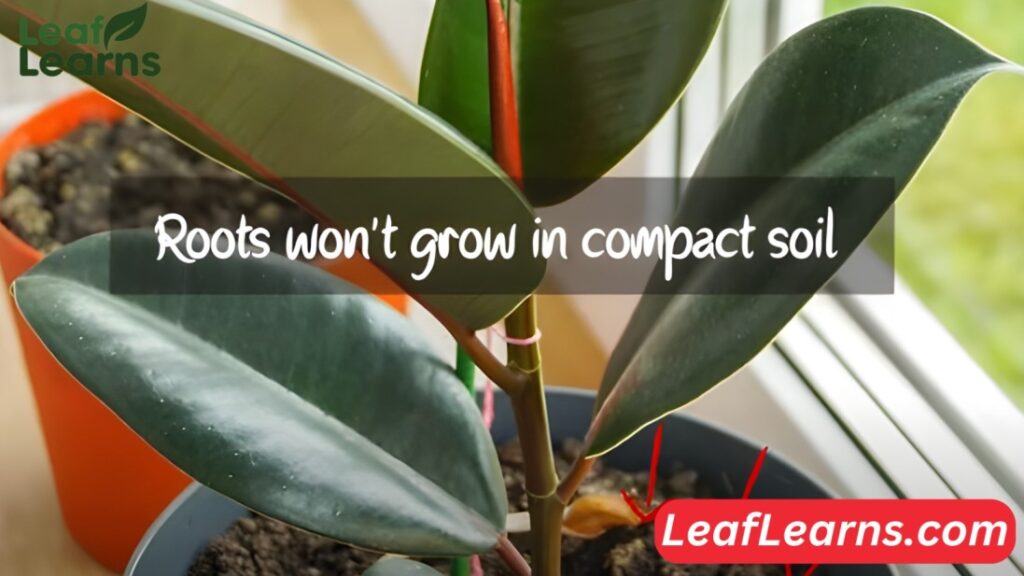
Solution
- To eliminate accumulated salts, flush the soil by giving the plant a good watering and letting any extra water drop out of the bottom.
- Use Distilled Water: To reduce the amount of salt that accumulates in tap water, switch to distilled or filtered water.
- Modify Fertiliser Usage: To avoid salt buildup, dilute fertilizer solutions or lessen their frequency.
- Keep an eye on Drainage: To avoid waterlogging and salt accumulation, make sure the pot is properly draining.
Underfeeding
Rubber plants leaves drooping can be a sign of underfeeding, in which the plant isn’t getting enough vital nutrients to stay healthy and vigorous. This shortage might cause the plant to struggle to support itself, which can result in weakening stems and drooping leaves.
Solution: Proper Feeding
Giving your rubber plant the nutrition it needs to thrive as best it can is essential to addressing underfeeding.
Use a water-soluble, balanced fertilizer designed especially for houseplants.
To guarantee enough feeding without contributing to nutritional imbalances or overfeeding, according to the manufacturer’s recommendations regarding application and frequency.
Root-rot Disease
The most prevalent cause of rubber plant leaves drooping is root-rot disease.
Overwatering or improper drainage can result in soggy soil, which is ideal for the growth of fungi that cause root rot.
The deterioration of the roots causes the leaves to droop and wilt because they are unable to properly absorb nutrients and water.
Solution
Act now to treat root-rot disease and bring life back to your rubber plant. First, take a close look at the roots for any indications of deterioration, then trim off any that are.
Make sure the pot has enough drainage holes when you repot the plant in well-draining soil.
Pest Infestations
A typical reason for rubber plant leaves drooping is pest infestations. Aphids, mealybugs, and spider mites are among the pests that can deplete a plant’s nutrition, resulting in weaker leaves that droop.
These pests are difficult to find until serious harm is done because they frequently hide in the joints between leaves or on the undersides of leaves.
Solution
- Examine Often: Keep an eye out for any indications of a pest infestation, such as webbing, small insects, or sticky residue on the leaves, on your rubber plant.
- Isolate Infected Plants: To stop a pest infestation from spreading to other plants, isolate the infected plant as soon as you see it.
- Treatment: Use chemical or organic pesticides to eradicate the infestation and properly follow the directions to protect the plant.
- Improve Air Circulation: Enhance air circulation around the plant by pruning overcrowded foliage and avoiding overwatering, as pests thrive in humid conditions.
Root-Bound Plant
your rubber plant may be root-bound if you’ve seen its leaves drooping. A plant’s roots get congested when it outgrows its container, which limits the amount of water and nutrients it can absorb.
This might cause the plant to struggle to survive, which can lead to withering and drooping leaves.
Solution: Think about repotting your rubber plant into a bigger container to solve this problem. To avoid waterlogging, choose a pot with enough drainage holes and fill it with well-draining soil.
Before transplanting, loosen the root ball gently to promote strong root development. Furthermore, cut off any damaged or too lengthy roots.
Poor Quality Soil
Rubber plants leaves drooping as a result of insufficient nutrients and poor drainage.
Leaf drooping occurs when the soil becomes compacted or deficient in vital nutrients, which prevents healthy root development and nutrition absorption.
Solution: Improving Soil Quality
Start by repotting your rubber plant in nutrient-rich, well-draining soil designed especially for houseplants to alleviate this problem. To enhance soil structure and aeration, add organic matter, such as compost or perlite.
Make sure there are enough drainage holes in the pot to avoid water logging. To avoid root rot, create a regular watering plan and let the soil somewhat dry out in between watering.
Root Bound and Transplant Problems
Rubber plants may get root-bound if they are kept in a little container for an extended period. Due to the restriction of root development, leaves droop as a result of poor absorption of water and nutrients.
Inadequate drainage during repotting or incorrect transplanting methods can also shock the plant and result in leaf drooping.
Solution
- Repotting: To give the rubber plant enough room for root development, move it to a bigger pot filled with clean, well-draining soil.
- Appropriate Drainage: To avoid waterlogging and root rot, make sure the new pot has enough drainage holes.
- Transplant Care: To reduce stress, handle the plant carefully during the transplant process. After transplanting, give the plant plenty of water to aid in its adjustment.
Rubber plants and humidity
Like many other indoor plants, rubber plants are weather-sensitive. Inadequate humidity levels are one frequent reason for rubber plant leaves drooping.
Rubber plants do best in environments with moderate to high humidity levels. If the air gets too dry, the plants will begin to lose water through transpiration, which will cause the leaves to drop.
Solution
- Track Humidity: To keep tabs on the humidity levels in your house, use a hygrometer. For best development, aim for a humidity range of 40–60%.
- Boost Humidity: You may use a pebble tray filled with water or a humidifier placed close by to raise the humidity level surrounding your rubber plant. Moreover, frequent misting might aid in raising humidity levels.
- Plants in Groups: Plants in groups can benefit from the creation of a micro climate with increased humidity levels.
Caring for Your Rubber Plant
Taking care of a rubber plant requires attentive maintenance to ensure its health and vitality. If you notice your rubber plant’s leaves becoming limp or drooping, it might be a sign of overwatering or improper care.
To address this issue, first, assess the watering routine and adjust as necessary, ensuring the soil is neither too dry nor waterlogged. Additionally, consider repotting the plant if it’s showing signs of distress after repotting, ensuring proper drainage to prevent root rot.
For specific issues like drooping and curling leaves, identify potential causes such as inadequate light, improper humidity, or pests, and address them accordingly. Varieties like the Tineke rubber plant or the burgundy rubber plant may have specific care requirements, so it’s essential to research and cater to their needs accordingly.
Lastly, if you’re unsure about why your rubber plant leaves drooping, explore common queries and seek advice from experienced growers to troubleshoot and restore your plant’s health.
Final Thoughts
Maintaining the health of your rubber plant depends on knowing why its leaves are drooping. You can successfully handle any difficulties by evaluating elements like as humidity levels, light exposure, and watering practices.
You may also learn more about plant care by looking up the particular maintenance needs of certain rubber plant species, such Tineke or burgundy rubber plants.
Never be afraid to ask knowledgeable gardeners for advice on how to correct and rejuvenate your drooping rubber plant leaves.
FAQs
How do you fix droopy rubber plant leaves?
Make sure the soil dries out in between waterings to correct drooping rubber plant leaves. Make sure the space gets enough light, and keep the humidity at the ideal levels. If the plant is root-bound, prune any damaged or yellowing leaves and think about repotting.
What does an overwatered rubber plant look like?
Symptoms of an overwatered rubber plant include yellowing, withering, or dropping of leaves. Root rot may form, and the soil may seem wet. To combat overwatering, reduce the frequency of watering, let the soil dry out more in between applications, and make sure drainage is adequate.
Why are my rubber plant leaves dropping?
Pests, temperature swings, inadequate light, overwatering, and underwatering can all cause rubber plant leaves to fall off. Examine the plant’s surroundings and maintenance regimen to determine the root cause and take appropriate action. To stop more leaf falling, change your watering schedule, allow enough light, and keep an eye out for pests.
How do you restart a rubber plant?
Stem cuttings from healthy branches can be propagated in water or a well-draining soil mixture to revive a rubber plant. To promote root development, make sure the cuttings have at least one leaf node and remove any lower leaves. After the cuttings begin to take on roots, place them in pots and keep them in a warm, humid place with indirect light.
How can I improve my Rubber Plant?
Make sure your rubber plant gets enough light ideally bright, indirect sunlight to promote its health. Continue watering regularly, letting the soil dry out a little bit in between applications. Dust the leaves frequently to maintain their cleanliness and for healthy photosynthesis. To encourage healthy development, think about fertilizing your houseplants during the growing season with a balanced fertilizer.

